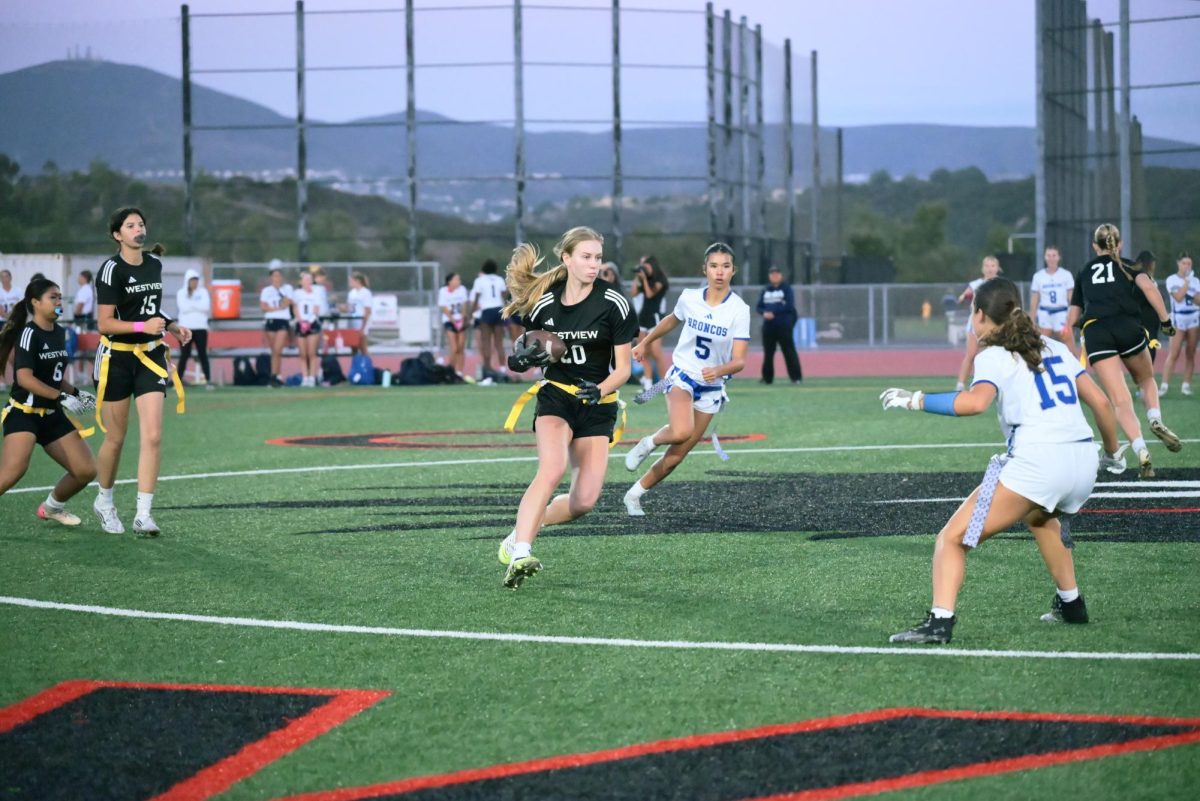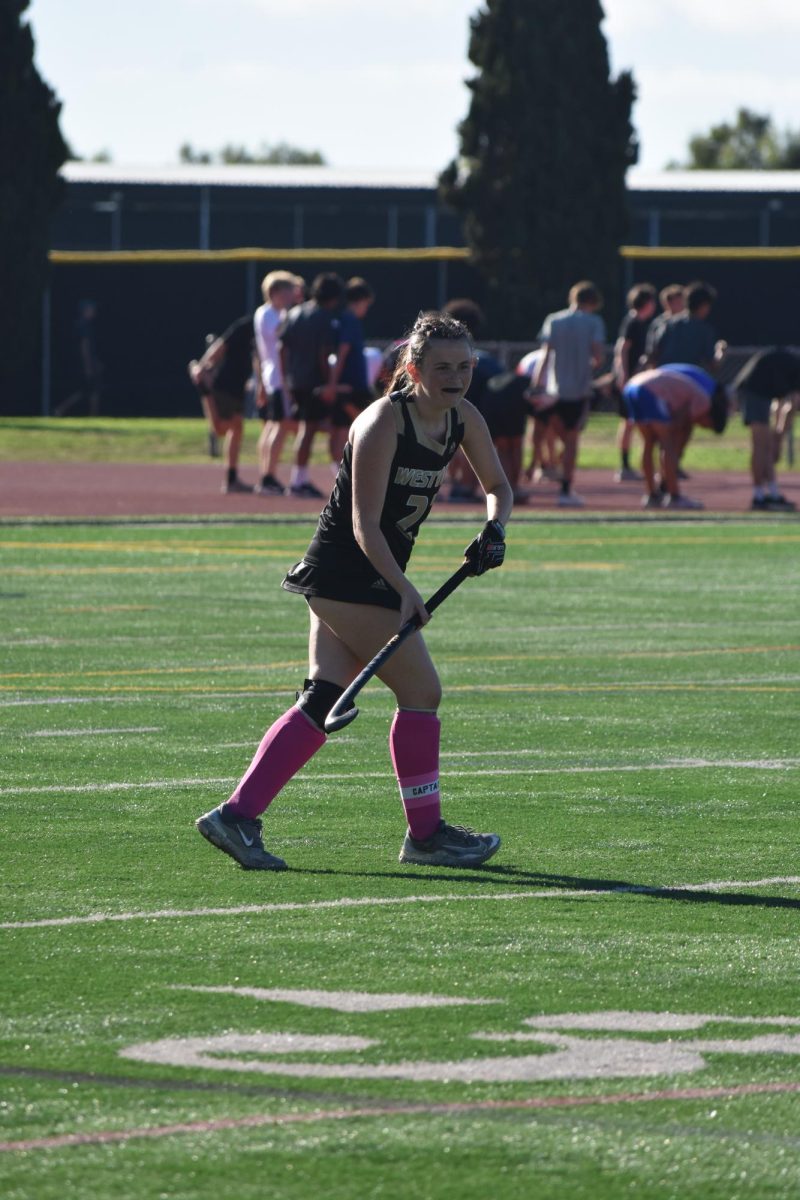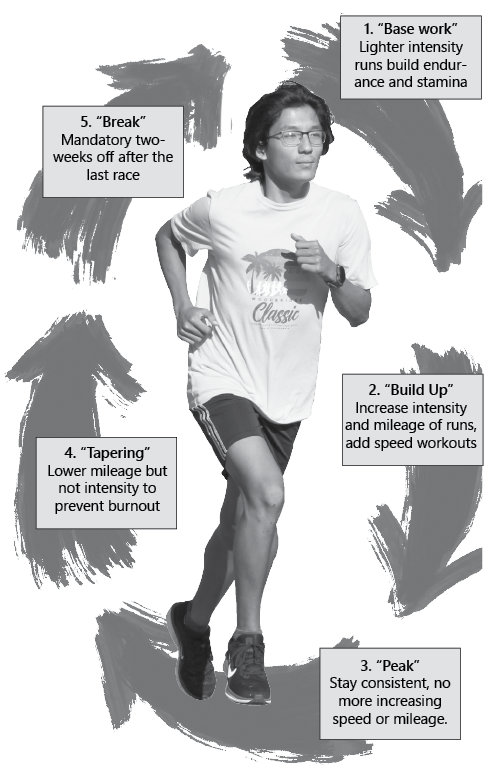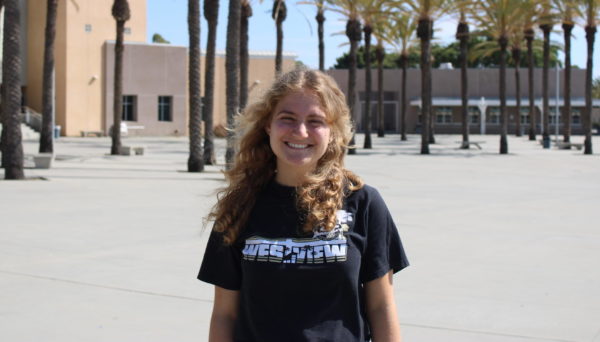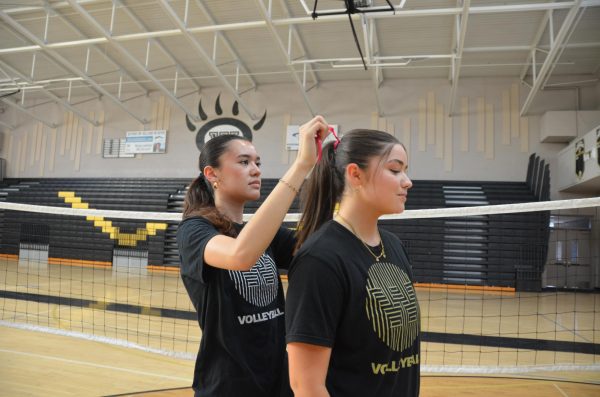
Hastings’ maternal grandmother was diagnosed with breast cancer at 53, and her paternal aunt was diagnosed with the same illness two years ago. As a woman with this genetic disease in her family, Hastings said that the knowledge that she could be diagnosed with the illness one day is anxiety-inducing.
“It’s always in the back of my mind that it’s something that I might have to worry about in the future,” Hastings said. “My mom goes every six months to get checked, and I’m eventually going to have to [do the same].”
In October, girls volleyball, football, cheer, field hockey and other sports celebrate Breast Cancer Awareness Month by wearing pink and donning ribbons during games.
Westview teams have recognized this month for so many years that it has become a tradition. Football, for example, has worn pink during October for more than a decade, according to coach Mitch Donnelly.
“We try to honor people who have survived [breast] cancer and those who have lost the battle by talking to players about why we wear pink,” Donnelly said. “It’s about paying respect.”
On Oct. 5, football took the field donning neon pink socks. The black hole roared as players ran down the bleachers, the student section a sea of pink.
Sports traditions centered around raising awareness of breast cancer have been impactful for the student-athletes such as Hastings who have personal connections to patients with the disease.
Mason Walsh (11) said that his grandmother’s diagnosis with breast cancer before his birth has made playing football in October feel more significant.
“She and my grandfather both played a big role in my life because I have a single mom,” Walsh said. “My mom and my aunt have to get checked regularly for it. When people in the stands who’ve had it see [our pink gear], I think they feel like we have their backs.”
Hastings said that when her aunt was diagnosed, it struck hard despite having a low likelihood of being fatal.
“I saw my aunt have to decide between a double or a single mastectomy,” Hastings said. “There’s an insecurity that comes with it and [the knowledge] that the [scar] is going to last forever even after it’s cured.”
Hastings said that October’s theme has instigated conversations with her volleyball teammates about the disease, which led her to make connections with other athletes who’ve been affected by it.
“I was having a talk with a lot of people on my team about breast cancer because a lot of them have family members that have been diagnosed, so they’re having to deal with that worry too,” Hastings said. “I never knew that my best friend’s grandma had breast cancer. I got to have that new connection because of the spirit and the awareness brought to it.”
Walsh said that football’s pink-out game also initiates conversations about breast cancer solidarity with his teammates.
“[The month] makes everyone aware of it and it builds a bond together,” Walsh said. “We’ll talk about [who] has it [in our families].”
Hastings said that the unity breast cancer has brought to the women in her family was a positive side effect of the disease.
“Even though the disease has impacted my family, I feel like it’s really brought the women in my family closer together in support of each other,” Hastings said. “That’s been [true] throughout my childhood.”
Hastings said that she believes the month’s focus on breast cancer awareness is important for prevention of the disease.
“I think that it’s really important for women to know how common it is and to know the steps they need to take to ensure that they are kept safe because if my aunt hadn’t gone to get checked, she might not have caught it in time,” Hastings said. “I think this month bringing awareness to it is really important to educate women on what they need to do in order to protect themselves.”
As virtually the only cause that is recognized by nearly every athletic group, breast cancer awareness month is a commemoration that Hastings said feels unifying.
“It’s an issue everyone can get behind and support,” Hastings said. “It’s so amazing to see pink all month long throughout all activities and groups because it’s so much more than just a color to so many people at Westview.”


